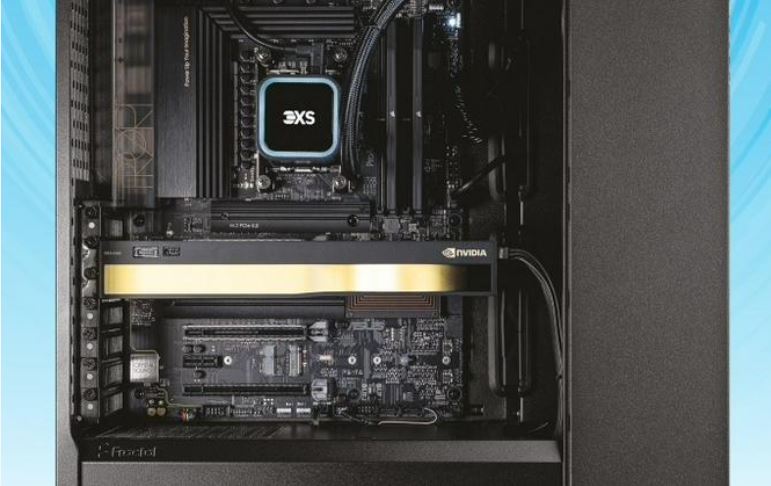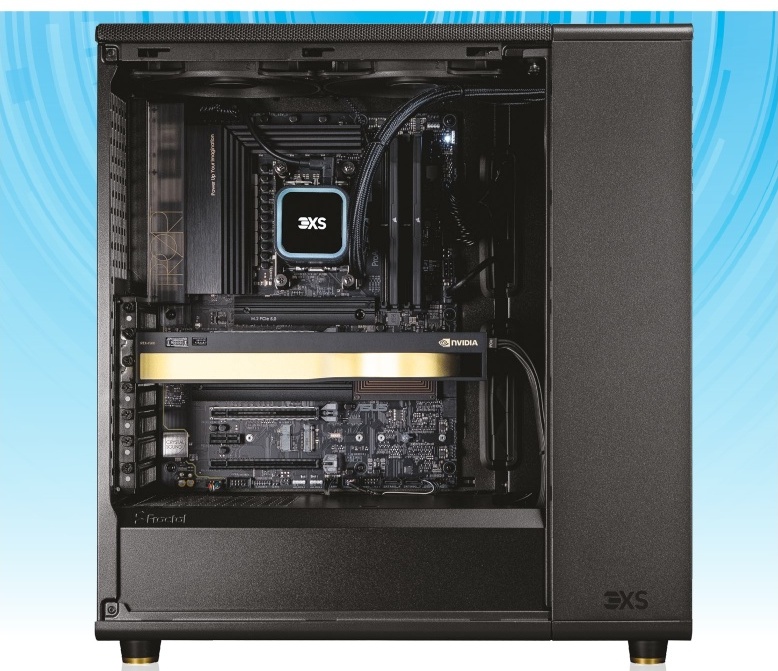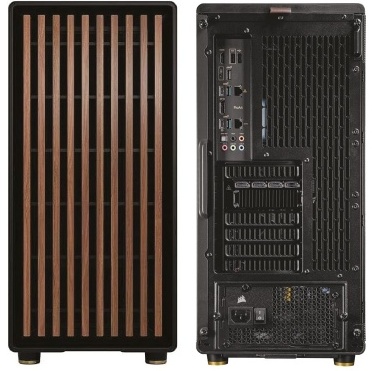
This review first appeared in issue 361 of PC Pro.
AMD was just in the process of launching its Ryzen 9000 Series processors as we were putting this Labs test together, and we’ve managed to squeeze our first look into the roundup. It comes from Scan in the form of the 3XS GWP A1-R24 workstation.
Just as the 14th generation of Intel Core CPUs don’t make any radical changes over the 13th generation, the Ryzen 9000 doesn’t diverge greatly on paper from the 7000 series, with core counts still ranging from six to 16. Even the clock rates haven’t progressed. The AMD Ryzen 9 9900X in the Scan system is a 12-core CPU with a base 4.4GHz clock and 5.6GHz boost. The 7900X it replaces has a 4.7GHz base clock and 5.6GHz boost. The 16-core 9950X is similarly no on-paper leap over its 7950X predecessor.
However, the CPU is now produced on a 4nm process instead of 5nm, which should enable more cores to run closer to boost speeds than the previous generation. There’s also support for 5,600MHz memory instead of 5,200MHz. Scan has gone even further, supplying 64GB of 6,000MHz DDR5 RAM as two 32GB DIMMs, leaving two slots free for upgrade on the Asus ProArt B650-Creator motherboard.

Scan has managed to go one better than the 4000-series Nvidia RTX graphics we would normally expect at this price and includes the 4500 Ada Generation instead. This sports 7,680 CUDA cores compared to 6,144 for the 4000, and 24GB of ECC-backed GDDR6 frame buffer operating at 432GB/sec, compared to 20GB at 360GB/sec.
The storage is more modest, however. Only one drive has been included, although it’s a fast one. The 2TB Corsair MP700 NVMe M.2 unit operates at PCI Express 5 speeds to deliver an impressive sustained read speed of 12,278MB/sec in CrystalDiskMark 8, with sustained writing of 7,904MB/sec.
Scan has opted for the regular version of the Fractal North Charcoal chassis with the A1-R24. This is a stylish case with wooden slats down the front that make it look more like designer furniture than a PC. The chassis offers a couple of 2.5/3.5in drive mounts, and a couple of 2.5in-only ones, should you need to expand the storage. The PSU included is the 750W Corsair RMX750, which isn’t hugely potent but should be enough for this set of components.

This system had the fewest cores of any entry this month – half as many as the Intel workstations – but it wasn’t the slowest, showing the capability of the new Ryzen 9000 series. The PC Pro media benchmark result of 761 beat the 24-core Intel CPU supplied by InterPro and the 16-core AMD processor from the previous Ryzen generation in the Armari Magnetar PrMM16R9. This includes the best image-editing result this month of 359, competent video encoding of 716, and multitasking of 924, which wasn’t far behind the 32-core systems in the test. The Cinebench 2024 multi-CPU rendering result of 1,873 was the slowest this month, but only 6% behind the Armari’s Ryzen 9 7950X, which has a third more cores. Notably, the single-core Cinebench result was 16% faster. Similarly, the Blender Gooseberry frame render took 324 seconds, which sits in between the two 24-core Intel CPUs this month – despite having half the cores. This bodes well for the AMD Ryzen 9 9950X when it arrives.
The GPU-based performance from the Nvidia RTX 4500 Ada Generation unsurprisingly sits between the 4000 and 5000 we have in other systems. The SPECviewperf 2020 scores of 206 in 3dsmax-07 and 729 in maya-06 promise great 3D animation, while 165 in catia-06, 226 in creo-03, 789 in snx-04 and 491 in solidworks-07 mean CAD and engineering will be smooth. The Geekbench ML result of 24,416 means AI inference is midway between the other Nvidia cards, as is 15,285 with LuxMark 3.1 OpenCL.
With just 12 cores against systems boasting 16 or 24 in this price category, and 32 or 64 in the higher class, the Scan 3XS GWP A1-R24 acquits itself surprisingly well, showing that the AMD Ryzen 9000 series is a welcome upgrade over the 7000 series. Had this system included the 16-core Ryzen 9 9950X, it could have been our Labs Winner.
!["[T]he First and Fifth Amendments Require ICE to Provide Information About the Whereabouts of a Detained Person"](https://images.inkl.com/s3/publisher/cover/212/reason-cover.png?w=600)






